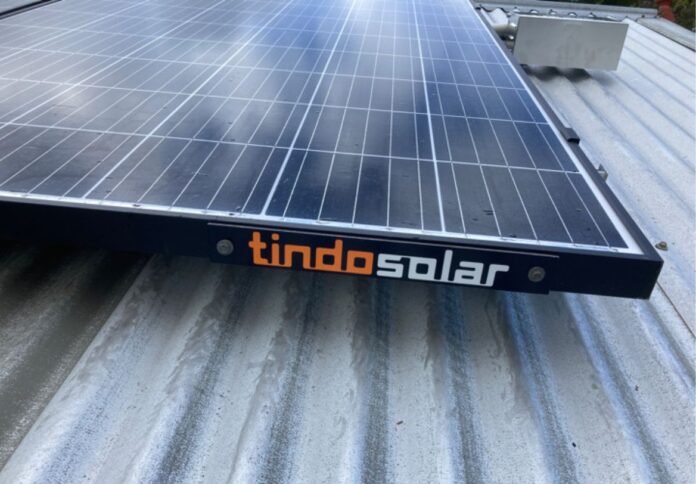
Media Release by Tindo Solar
Minister for Climate Change and Energy, the Hon Chris Bowen MP, has backed Australian industry’s part in the renewable energy transition as he opened the Australian Centre For Excellence in PV (ACEPV) in Adelaide today and announced that Adelaide has been selected as the host city for the 2024 International Renewable Energy Conference (IREC).
The ACEPV is Tindo Solar’s $11 million solar panel manufacturing and innovation facility which has the capacity to produce 150 megawatts of Australia-made solar panels each year, using the latest global standard for solar cells, the M10.
Mr Bowen praised the launch of ACEPV and said IREC 2024 was a fantastic opportunity to showcase the best that Australia and Oceania had to offer in renewable energy.
“The future of energy in Australia and the world is renewable, and sharing the latest knowledge with international partners and experts will help make that vision a reality,” Minister Bowen said.
“Australia is on the path to becoming a renewable energy superpower. Forums like IREC will help us continue to work with global partners, the Pacific and First Nations to address key challenges in renewable energy and find the best path to a clean energy future for all.”
Australia’s only solar panel manufacturer, Tindo Solar employs 50 people at the ACEPV which includes a design and engineering function and an education facility for visiting students and innovators in the solar energy industry.
Director of Tindo Solar, Mr Glenn Morelli, welcomed the news that Adelaide would host IREC in 2024 and he said Tindo believed Australian manufacturers had the ability to support the energy transition.
“By 2050, 65 per cent of the electricity in the National Energy Market will be from rooftop solar,” he said. “We’ll be producing 70 gigawatts of power from solar panels – equivalent to the total current capacity of the NEM. We are committed to Australian manufacturing playing a part in the energy transition and we welcome the government’s policies supporting renewables and Australian manufacturing.
“For Tindo, this factory is just the beginning, and we want to be the catalyst for a domestic solar supply chain that means every part of the panel can be manufactured locally, creating thousands of jobs and giving every Aussie the opportunity to have locally-made panels producing power on their roofs.”
SA Minister for Energy and Mining, Hon Tom Koutsantonis MP, said: “South Australia is proud of the growth Tindo Solar has already achieved and welcomes the establishment of the Australian Centre for Excellence in PV.
“SA is a world-leader in renewable energy, so this state is a natural home for cutting-edge research.
“Advanced manufacturers, such as Tindo, are the job creators and productivity drivers crucial to the state and national economy.
“As the Ukraine invasion and COVID-19 pandemic have shown, supply chains are vulnerable and we must promote sovereign capability to strengthen Australia.”
Mr Morelli said a lowest-cost approach had driven uptake of solar energy in Australia but the market was leaning more to quality and longevity.
“STC rebates and feed-in tariffs initially drove installations,” said Mr Morelli. “Now, the market is more focused on solar PV with battery, VPPs, and a high-quality power supply with the most efficient and reliable output.
“There’s also more interest in longevity and sustainability. A panel that is built to produce power for 25 years is more sustainable than a panel that operates for ten years. We also have a recycling guarantee so that decommissioned panels are recycled for industrial re-use by Reclaim PV.”
Tindo Solar makes two panels, the 410w rooftop panel and the 550w utility-scale panel, the largest ever made in Australia. The panels have the lowest cell-to-module (CTM) loss ratio of an Australia-made module; they produce power at around 21% module efficiency and 23.1% cell efficiency. The industry average energy efficiency of a solar module is between 17 and 19%, and the average CTM loss is 2-3%.
“At the ACEPV we have the engineers and the technical skills to commercially produce one of the highest-performing solar panels in the world. If Australia is going to lead the world in the energy transition, we have to develop a sovereign capability in renewables,” said Mr Morelli.




















